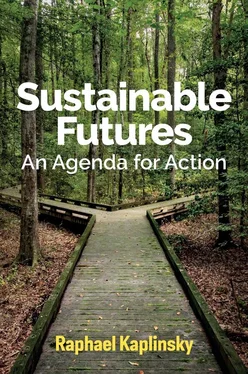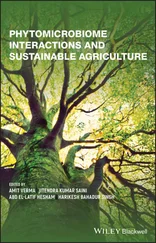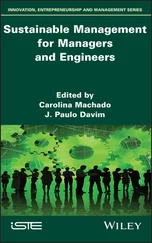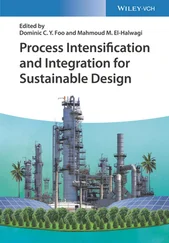Clearly, before we can get to these policy issues, we need to step back and understand the historical trajectory which has resulted in the confluence of connected economic, social and environmental crises. We begin in Chapter 2with what I believe is the most technical chapter for non-specialized readers. This charts the rise and fall of Mass Production as an economic system. It evidences the unprecedented ‘Golden Age’ after World War 2 when economic growth proceeded at historically unprecedented rates, not just in the richer northern economies but in almost every country of the globe. But, after roughly three decades, the ‘Golden Age’ of Mass Production began to atrophy. Not only did the rate of economic growth slow in all of the major high-income economies, but, as the millennium approached and advanced, the underlying fundamentals of growth became increasingly uncertain. A high-tech financial bubble in the late 1990s was followed by the prolonged Great Recession after 2008. The Covid-19 pandemic in 2020 raised the stakes in economic fragility, exposing underlying structural weaknesses which have been unfolding for some decades.
As in each of the previous post-Industrial Revolution surges, the Mass Production techno-economic paradigm was supported by patterns of social and political organization, by lifestyles and by societal norms and values. In the ‘Golden Age’, this saw the extension of liberal democratic political systems, mass consumption, suburbanization and, despite periods of turmoil, a generalized sense of common social and political purpose. Despite differences, there was a widespread sense that ‘We are all in it together.’ But, just as the economic system of Mass Production began to atrophy from the mid-1970s, so too did the social compact which supported Mass Production. In Chapter 3, I describe the evolution of these social and political developments which, since the early 1980s, have resulted in increasing inequality, increasing social discontent and the rise of populist politics.
Whilst the link between the economic, the social and the political can be seen as involving a ‘close synergistic fit’ between 1950 and the late 1970s, and then their interrelated decay after the early 1980s, the unfolding environmental crisis has much deeper roots. Although the origins of the environmental crisis go back at least until the Industrial Revolution in the early eighteenth century, after 1950 the biosphere witnessed a sharp increase in the forces driving climate change and environmental unsustainability. This has come to be termed ‘The Great Acceleration’. Although the Great Acceleration and its increasingly severe impact on the environment is in large part a consequence of sheer numbers (of people and consumption), in some important respects it also flows from the specific character of the Mass Production techno-economic paradigm. These developments are described in Chapter 4.
Chapter 5explores the character of these interlinkages between the economic, the social, the political and the environment through the lens of what is referred to as ‘socio-technical systems’ – that is, the body of theory which I use to analyse the rise and fall of the Mass Production techno-economic paradigm. Working with this framework, I analyse and explore the nature of these interactions during the Golden Age, and then the linked crises in sustainability after the late 1970s.
Chapters 6and 7turn to the future. Chapter 6recounts the development and evolution of the ICT techno-economic paradigm. It illustrates the ‘revolutionary’ and disruptive nature of this new technology, seen though the historical lens of five previous techno-economic paradigms. Each of the previous paradigms was driven by a core ‘heartland technology’ – that is, a technology which has ubiquitous use through the terrain of economic and social activity, which offers major reductions in cost and the possibility of new products, and which not only is characterized by declining cost but has no physical limits to its supply. Information and Communications technologies exhibit all of these attributes. In Chapter 7, I present three case-studies which not only evidence these ‘heartland technology’ characteristics, but also show the synergy between the economic, the social and the political, and their capacity to strengthen environmental sustainability. They set the scene for the development of a synergistic systemic policy agenda simultaneously tackling the remaking of economic, social and environmental sustainability.
A five-point programme to provide a sustainable trajectory to the deployment of the ICT paradigm is outlined in Chapter 8. Although the diffusion of electronic technologies lies at the heart of the new paradigm, achieving a more sustainable world cannot be achieved through a technical fix. The systemic nature of techno-economic paradigms requires complementary changes in social and political organization and in lifestyles, values and norms. Chapter 9concludes the book by discussing agency – who must do what , and when , if a sustainable trajectory is to be achieved?
A word of caution is needed from the outset. The terrain of discussion in this meta-analysis of crisis and response is vast. The interpretation of history in Chapter 5and the theory of techno-economic paradigms are subject to disputation among historians. There are many uncertainties in the impact of particular policies, and there are many reactionary forces resisting progressive change. However, a nihilistic rejection of the ideas in this book has its own dangers. It is abundantly clear that existing policy proposals are not adequately addressing the challenges to the environment, to our economies and to the social and political fabric. In large part, this is because they do not recognize the need for a holistic response to the crises in sustainability and because they fail to learn from history.
This book is a plea for agency and activism. It sets out an agenda for action. But action must be purposefully guided to achieve more sustainable societies. The character of the new paradigm is malleable. What emerges will depend on how individuals and groups of individuals react to the challenge. If we really care about the state of our world, then we cannot remain neutral observers. We must exercise our individual agency to help to shape the direction of change. Only if enough of us work in concert can we avoid the dark side of paradigm change and facilitate the transition to a new more economically, socially and environmentally sustainable (dare I say ‘civilized’?) world.
This book focuses on the experience of the dominant high-income economies in North America, Europe and Japan. Their growth trajectories dictated the shape of the global economy and global politics, at least until the end of the twentieth century. Despite the recent rapid growth of China, India and other emerging countries, the high-income economies continue to dominate the world and to determine the trajectory of global economic, social and environmental sustainability. Clearly, there is an urgent need to explore the potential of the ICT paradigm to promote sustainable development in low- and middle-income countries as well. This is a herculean but crucial task, but requires separate exploration.
2 The Rise and Fall of the Mass Production Economy
The Covid-19 pandemic crashed the global economy.
In the first half of 2020, the UK economy declined at the fastest rate since the beginning of the Industrial Revolution three centuries ago. In the US, the unemployment rate mushroomed to 25 per cent of the labour force. Germany, long the lead economy in Europe, fell into recession. The economic car-crash was not confined to the high-income countries, but affected the global economy. For the first time since its growth spurt began in the 1980s, China decided not to produce a target for its rate of economic growth. The collapse in world trade (more than 30 per cent in the first half of 2020) was the largest on record. But not all citizens suffered equally. Despite government programmes to support employment and production, as a general rule the poor were hit more by the economic collapse than were the rich. And that was as true for distributional impacts within countries as between high- and low-income economies. A simple indicator of the scale of this challenge can be seen in the cost to governments of trying to arrest the rate of economic decline. In April and May 2020, high-income countries injected $17tn into their economies. This raised an already high average government-debt/GDP (Gross Domestic Product) ratio of 109 per cent in mid-February 2020 to 137 per cent in May.
Читать дальше












